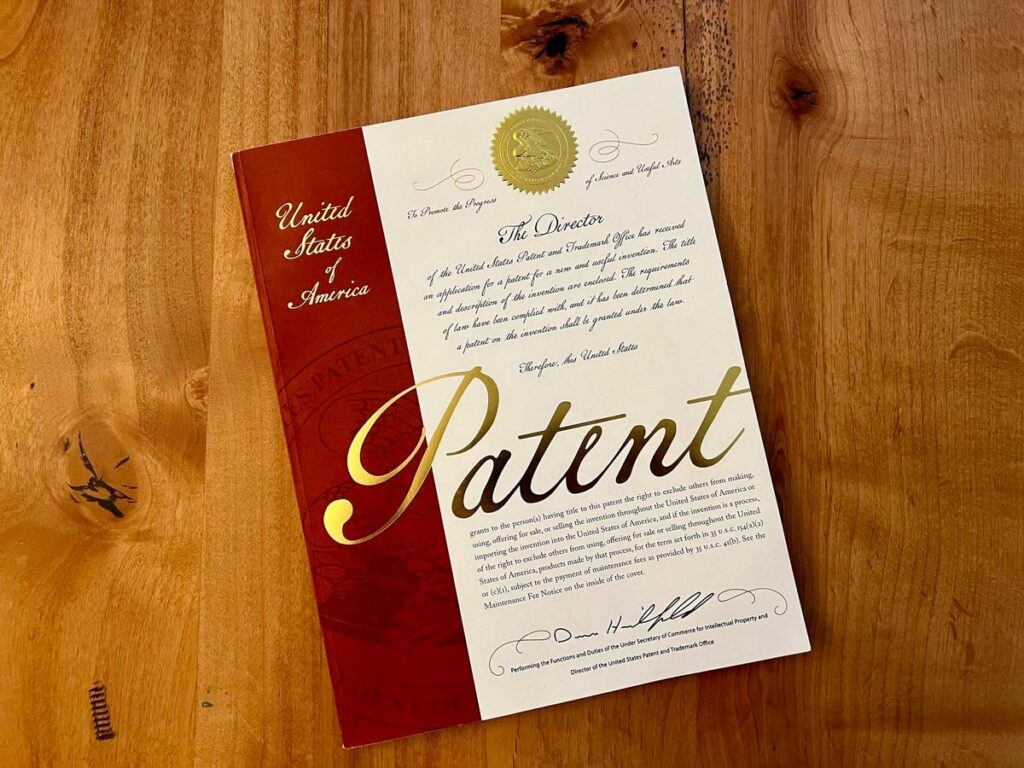Too many entrepreneurs treat filing a patent as a milestone in itself—proof that their invention matters. But filing a patent too early, or without a clear business strategy, can create serious problems: Expensive protection for an idea that is not marketable, weak claims that are easy to work around, or legal documents that fail to support the inventor’s goals. At worst, it results in wasted time and money.
Alexander Wurzer, a professor who leads the IP Business Academy at the Center for International Intellectual Property Studies at the University of Strasbourg (CEIPI), has spent his career helping inventors avoid that fate. One of the most damaging misconceptions about patents is the belief that they inherently have value, he said.
“Quite often I hear from inventors who have the perspective that a patent is a kind of inventor award,” Wurzer told me during a recent public conversation on LinkedIn. “And because something is patented, it has a value. Because it is patented, it has a benefit to customers. It should attract customers because of the patented solution. I’m not convinced about that”
He’s right to be skeptical. Patents become valuable when they support a commercial objective. Yet inventors routinely reverse that logic—filing first, and only later trying to figure out what to do with it. As Wurzer put it, “They say, ‘You tell me what the value of the patent is, and then I can make my decisions what I want to do with it.’” That thinking leads to weak protection, poor alignment, and missed opportunities.
The IP Business Academy was founded to help solve this problem. Its mission is to raise awareness about the value of IP among innovators and to support national and international innovation systems by documenting and communicating the best practices in IP management.
Wurzer and I agree: When it comes to patents, entrepreneurs need to have a clear understanding of their future business. Only then can patent practitioners and IP strategists help craft protection that performs.
The following ten questions are designed to help you do exactly that. If you can answer them confidently, you’re ready to file a patent.
1. What is your goal, and does your patent protect what matters most to achieving it?
A patent only holds real value when it’s directly aligned with your business objective. That may sound obvious, but it’s one of the most common missteps entrepreneurs make. They rush to file without fully understanding how they plan to make money with their idea—or which part of their invention actually needs to be protected in order to do so.
Before filing, get clear on your path to market. Do you want to license your invention to an established company? Or bring it to life yourself? Your answer will help you determine which features or functionalities are essential to protect. Just as importantly, you need to know what sets your product apart. What’s your competitive edge? What can you offer that’s truly different—and is that difference captured in the claims of your patent?
Write down the one or two features that give your product its commercial edge, your “point of difference.” Then ask your patent practitioner to show you exactly where and how those features are protected in the claims. If there’s not a direct match, it’s time to revisit your application.
2. Can your invention be manufactured efficiently, and is that reflected in your patent?
If your invention is too expensive or complex to manufacture, it won’t move forward. And if that’s the case, your patent—no matter how clever—will have little commercial value.
Think like a manufacturer early in the patenting process. Consider how the product will be built, what materials it will require, and how those decisions impact cost, scalability, and production timelines. Even more importantly, incorporate those insights into your patent application. A well-crafted patent protects the most efficient, cost-effective version of the idea.
Sketch out how your product might be made, including materials, mechanisms, or processes. Then talk to someone with production experience to validate your assumptions. Once you have a clear path to manufacturing, ensure your patent includes claims that cover the most efficient version of your invention—not just the first version you imagined.
One of the best ways to strengthen your patent is to imagine how someone else might try to get around it. If you were your own competitor, how would you knock off your product without infringing the claims?
Thinking ahead to potential workarounds forces you to view your invention more holistically. Don’t limit your thinking to protecting a single feature—consider how to safeguard the innovation itself.
List out the different ways someone could replicate the key benefit of your product without copying it exactly. Could they change the shape? Use a different material? Rearrange the components? Then work with your patent practitioner to ensure those variations are addressed in your claims.
4. Is your patent written to stop competitors, or just to describe your invention?
A strong patent deters. When competitors read your claims, they should see a well-defended perimeter, not a list of features they can sidestep with minimal tweaks.
This kind of strength comes from thoughtful claim construction, which requires your direct input. Your practitioner can craft the legal language, but only you know what needs protecting most, and what others in your industry might try to copy or change.
Once your claims are drafted, put yourself in a competitor’s shoes. Would you be worried about infringing? Are there obvious ways to get around the claims? If so, talk to your practitioner about strengthening your coverage.
5. Have you made a checklist of what needs to be protected, and matched it to your patent claims?
Before you file, take time to write out the specific features, functionalities, or design elements that give your product its value. Then, go through the claims in your application and verify that each item on your list is directly addressed.
This extra layer of diligence helps avoid gaps in protection and ensures your patent is tied to your business goals.
List every critical feature of your invention—especially the ones tied to customer value or market advantage. Then, sit down with your practitioner and go through the claims line by line. Ask, “Where is this protected?” for each item on your list. If you can’t find a clear match, revise the claims before filing.
6. Are you relying too much on your patent practitioner?
While hiring a patent practitioner who has your best interests in mind is essential, relying on them to make strategic decisions about your intellectual property is a mistake. The job of a patent practitioner is to focus on writing and filing, not on market positioning, licensing potential, or business viability.
Approach the process as a collaboration. Your job is to supply the business strategy; their job is to translate that into legal protection.
Before your next conversation with your patent attorney or patent agent, consider preparing a one-page brief that includes your intended business model, your target customer, your main competitors, and the features that create your biggest competitive advantage. Use this to guide the conversation and ensure your patent reflects your actual goals.
7. Are you using the right IP tools for your business model?
A utility patent is just one of several IP tools, and it may not be the best one for your specific goals. Depending on your business model, you might be better served by a design patent, trademark, or copyright.
Choosing the right protection strategy helps you maximize value without overspending. It also ensures you’re protecting your idea in the most relevant way for your industry and product type.
Step back and assess your plan for commercialization. Where will you sell your product? Who are your competitors? How likely is it that you’ll need to enforce your IP—and how much are you prepared to spend doing so? Use these answers to explore whether a design patent, trademark, copyright, or a provisional patent application might offer a better fit than a full utility patent right now.
8. Are you using provisional patent applications to your advantage?
A provisional patent application (PPA) gives you 12 months to test, refine, and expand your idea while securing an early filing date. It’s an ideal way to get started without committing to the full cost and rigidity of a utility patent.
The best provisional applications are rich in detail and include multiple variations, manufacturing approaches, and clear drawings. Used properly, they lay the groundwork for a much stronger utility filing later.
Draft a provisional application that clearly explains the problem you’re solving, how your invention works, and all the ways it could be made or adapted. Include as many variations and alternate embodiments as possible. Then, set a schedule to revisit and build on your application as you gather new insights during the year.
9. Have you tested the market before investing heavily in patents?
A patent is only valuable if the product it protects has real market potential. Instead of filing first and hoping for the best, validate demand early. Find out if people actually want what you’re offering.
The goal isn’t to reveal your invention, it’s to confirm that the benefit it delivers is meaningful. That way, you can invest in protection with confidence.
to potential customers. Share the problem your invention solves and the outcome it delivers without revealing your unique solution. If people are excited about the benefit, that’s your green light to proceed with IP protection. If they’re not, it may be time to refine the idea—or move on.
10. Are you selling the benefit, not the invention?
When you talk about your invention, focus on the result it delivers, not the mechanics. Customers buy benefits. Investors invest in solutions. Partners care about outcomes.
This benefit-first framing also allows you to gauge interest without risking disclosure. You can engage potential licensees, funders, or customers early on by selling the why, not the how.
Write a single sentence that describes the core benefit of your invention. (Think: “Work twice as fast with half the effort.”) Use that sentence to test interest and open conversations. If people respond positively, that’s your signal to keep going—with confidence and focus.
Intellectual property is an incredibly important tool for business. Gain an understanding of how patents are used in practice by speaking with fellow entrepreneurs. Ask a lot of questions!
Read the full article here











